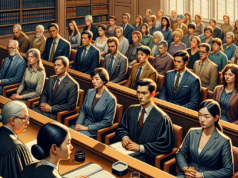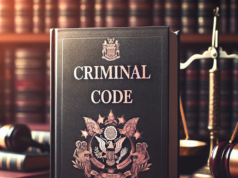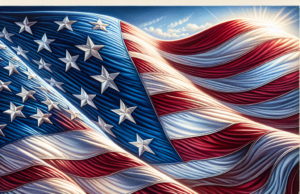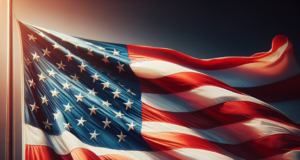
The re-authorization of the Violence Against Women Act (VAWA) has been signed into law, marking a huge step forward for victims of domestic violence all across the country. This new legislation is more powerful than the version passed in 1994, in that it both expands and creates federal programs that help victims of domestic violence. In addition to re-establishing provisions of the older law pertaining to domestic violence, it provides newly established legal protections for Native American women and LGBT victims of domestic violence.
(More on News at LAWS.com, contact Adam for interviews “adama@laws.com”)
Since its inception in 1994, the Violence Against Women Act has provided a holistic approach to tackling the issue of domestic violence. One of the ways it did this was by establishing a national hotline and improving the way the criminal justice system responded to domestic violence.
In New York City alone, there were more than 260,000 domestic violence incidents in 2012. In New York City, there were 69 family related homicides in 2012. However, matters are improving throughout the city. For example, in 2012 there were 2,724 domestic violence emergency beds in various shelters, which is a 35 percent increase from the 2002 figure. Crime is declining in New York City, and domestic violence crime, luckily, is no exception to this great trend.
The New York City based Center Against Domestic Violence was one of the first domestic violence organizations in the country, and is New York State’s first such organization. In 1977, it won the right for children to be sheltered with their mothers. In the 1990s, it launched the innovative PEER curriculum (Pride – Education – Equality – Respect) in order to reach high school and middle school students, today this program reaches some 30,000 students. Currently, its three shelters provide emergency accommodation to 1,000 women and children domestic violence victims annually.
The following is an interview with Rona Solomon of the Center Against Domestic Violence on her thoughts and feelings about the recent reauthorization of VAWA, and the work of her organization in the realm of domestic violence.
In your opinion, what does the recent passage of the Violence Against Women Act (VAWA) signify for the women's rights movement?
First – I think that the year and a half delay in passage for this act points up the great divide in our country. Protection against injustice is not finite or limited. The extension of rights to formerly disenfranchised people does not take anything away from the people who historically enjoy those rights. My right to safety is just as important as a man’s, but my having that right takes nothing away from his rights.
We need to work together – outside our usual cultural bounds – to ensure that women are not targeted just because of gender. Last year when I was working on a paper about how the Center teen dating violence prevention programs also combat bullying in schools, I came across an interesting statistic: in New York City public schools, regardless of grade, the biggest group of bullying victims is girls. Girls are more picked on than any racial or ethnic group – more picked on than LGBT kids – more picked on than disabled kids. And – within those often targetd groups – more girls than boys are victims of bullying.
I’m grateful that Congress passed this law, but the time it took and the dialogue around its passage gives me pause. Shouldn’t the safety of our wives, mothers and sisters be at the top of all legislators’ priorities?
Do you believe the new version of VAWA goes far enough to protect women against domestic violence?
There needs to be more investment in prevention education, both in schools and in the community. Violence against women is a learned act. Attitudes about women “needing” to be hit, or “taught who’s boss” or “just asking for it” can be replaced with new ideas of equality. Children can be taught to be assertive rather than aggressive and to be responsible bystanders who are empowered to speak up and say , “Hey, that’s not OK.” when they see bullying and relationship abuse.
Women in uniform are at tremendous risk and their plight is not addressed by the current legislation. One third of the women in the armed forces report having been sexually assaulted and almost all report having been harassed because they were women. Last fiscal year alone, over 3,000 female service members reported having been raped – while the Department of Defense estimates that actually almost 20,000 rapes actually occurred in that year. Is this the price women must pay to defend our freedom?
The new version of VAWA includes historic provisions for Native American Women and members of the LGBT community. Do you think the law as passed represents a step in the right direction for American Indian women and LGBT people in the United States?
The new VAWA is a great step forward. Giving Native American women access to the same level of protection as people who live off the reservation is tremendous. Violence against LGBT people is rooted in the belief that you are better than someone else just because of sexual identity. Being targeted because of your sexual identity should not be tolerated and this Act opens up new protections under law.
I hate to sound like a broken record, but my dream is that – through education starting at the youngest levels – we can eliminate the kinds of prejudice, sexism, racism and homophobia that make it OK to target individuals because of their identity. The kinds of believes about other people that make it OK to hurt them.
In which boroughs of New York City is there most demand for your services?
The Center is located Brooklyn, and so most of our non residential participants come from Brooklyn. Brooklyn is also the borough with the highest incidence of domestic violence in New York City. Almost two thirds of the emergency domestic violence shelter the Center provides are located in Brooklyn, so most of our residential participants come from other boroughs – mostly from the Bronx.
Do you believe New York City has come a long way since the initial passage of VAWA in 1994?
In 1994 a domestic violence victim could call the New York City Hotline for emergency shelter and be put on a waiting list for as long as two weeks. That was two weeks that she and her children remained in danger! Since that time, the emergency shelter system has grown to meet demand and it is unusual of a victim who reaches out for help to have to wait more than a day to come to safe shelter.
The Violence Against Women Act was directly responsible for the establishment of Family Justice Centers in Brooklyn, Queens and Manhattan. At these centers, victims have an array of community services – from social service to pastoral counseling to medical care – available in one spot. The Center Against Domestic Violence has been a community partner at the Brooklyn Family Justice Center since it opened, offering counseling and case management for women whose main language is Spanish. The centers are part of a “Policy to Increase Arrests, ” in that domestic violence victims are offered the kinds of support they need to continue their complaint through to trial – and not give up – and not have to go back to their batterers.
If you are a victim of domestic violence, please contact the Center Against Domestic Violence for help. For more information on domestic violence in general, please visit the Domestic Violence Page.






























